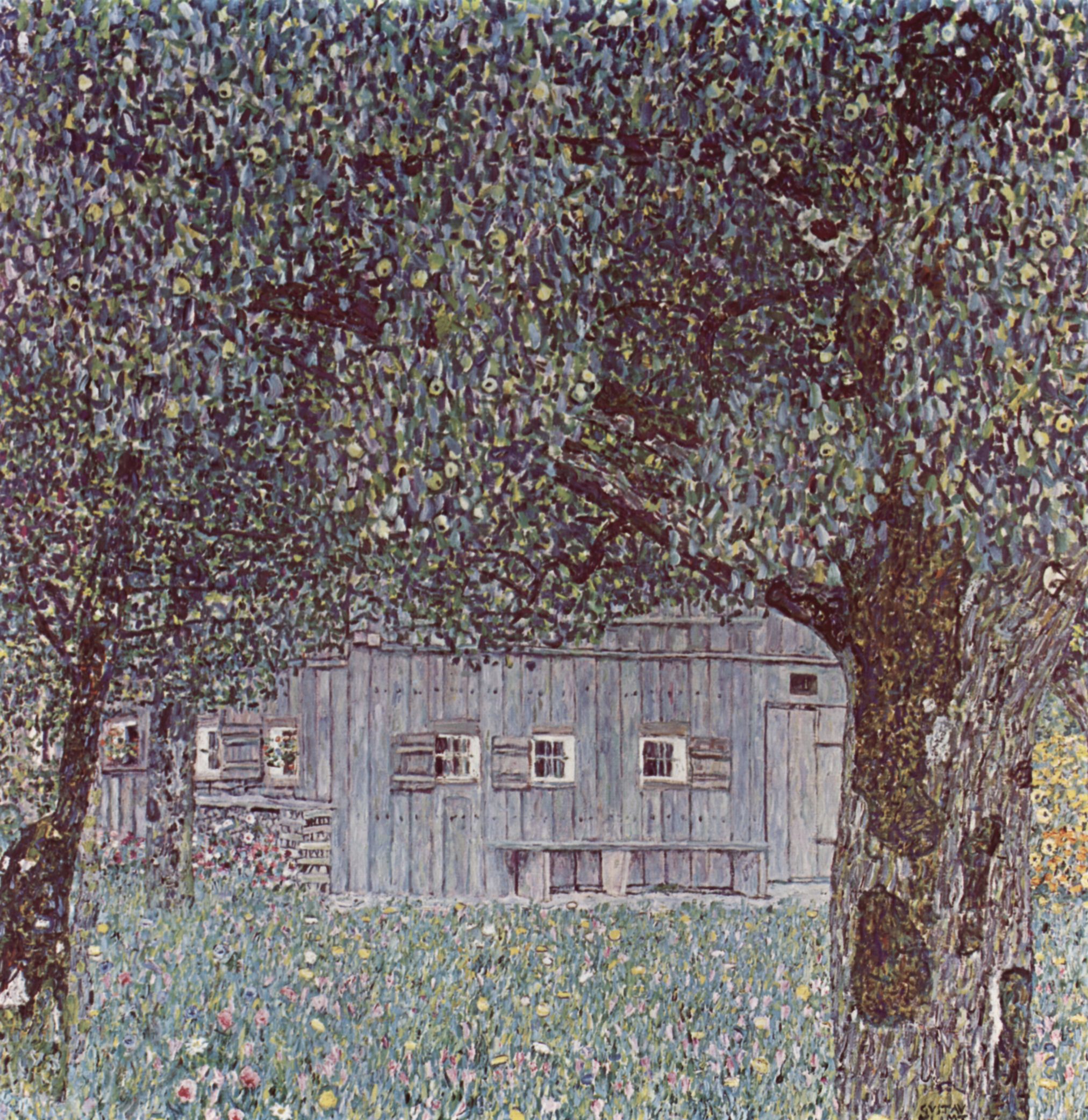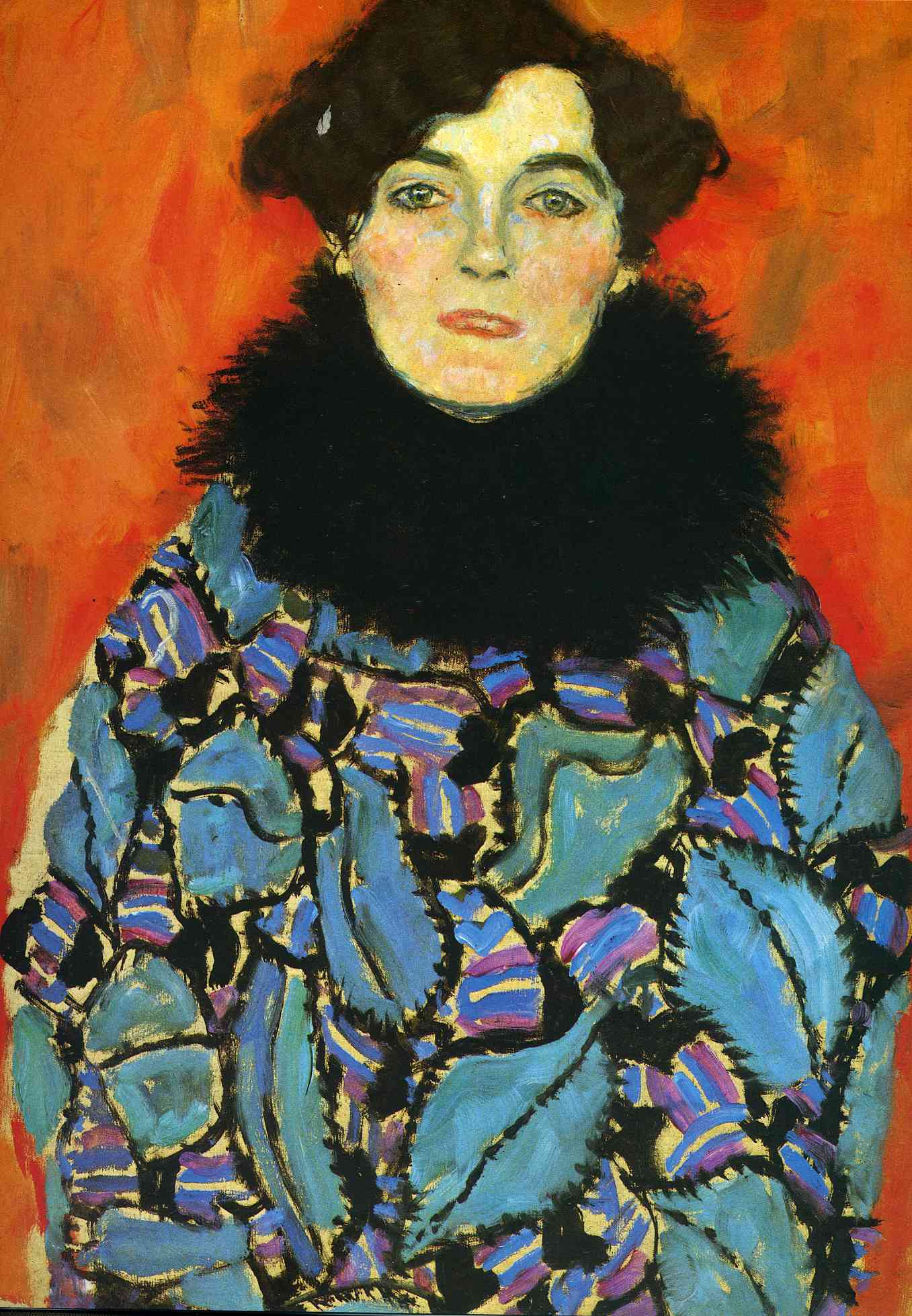Fine Arts Museums of San Francisco
Gustav Klimt, "The Virgin," 1913. Oil on canvas, 74 3/4 x 78 3/4 in. (190 x 200 cm). National Gallery Prague, Inv. 04512 © 2017 National Gallery in Prague(Image courtesy of the Fine Arts Museums of San Francisco)
The exhibition will celebrate the legacies of these two pioneers, who each broke the reigning aesthetic boundaries of the time to find new vocabularies and create powerful agendas for modern painting and sculpture. Arranged in dialogue with the Legion of Honor’s acclaimed collection of Rodin works, KLIMT & RODIN will provide an incredibly rare opportunity for American audiences to see a range of signature works by the Austrian master Klimt, many of which will travel to the U.S. for the first time.
“This will be an exceptional and breathtaking opportunity to experience the art of Gustav Klimt in San Francisco,” says Max Hollein, Director and CEO of the Fine Arts Museums of San Francisco. “And as a native Viennese, I am especially proud that we are able to present the beloved works by Klimt at the Legion of Honor. With our important Rodin collection, we are perfectly situated to engage Klimt’s masterpieces in dialogue with Rodin’s oeuvre.”
This first major Klimt exhibition on the West Coast will survey the span of the artist’s practice. Among the 36 works by Klimt that will be exhibited are iconic paintings, such as
Nuda Veritas (1899), Klimt’s response to the conservative views of the art establishment, on loan from the Österreichisches Theatermuseum;
Upper Austrian Farmhouse (1911), in his landscape style, loaned by the Belvedere in Vienna;
Portrait of Ria Munk III (1917) from the Lewis Collection;
and The Virgin (1913), (above) loaned from the National Gallery in Prague, in which Klimt’s use of color is on full display.
“This exhibition will provide an insight into leading art developments in Europe at the turn of the century through the lens of two of its most important artists,” adds curator Tobias G. Natter. “It marks the very first time a survey of Klimt’s works with some of his most outstanding masterpieces will be exhibited in California.”
Setting the context for the exhibition will be two seven-foot-tall panels reproduced from one of Klimt’s most celebrated works, the
Beethoven Frieze (1902).
The exhibition copy of the frieze will give American audiences a special opportunity to experience the iconic work outside of Vienna. Widely regarded as the start of Klimt’s “golden period”, the frieze was painted for the 14th Vienna Secessionist exhibition in celebration of Beethoven’s Ninth Symphony and illustrates the human desire for happiness in a tempestuous world marked by suffering.
A key moment of the exhibition will be the meeting between Klimt and Rodin in 1902. While Klimt, the president of the Vienna Secession, was still developing his signature style, Rodin was at the peak of his international fame. Vienna was honored to welcome the sculptor, who had exhibited several key works at the Vienna Secession — one of the most innovative manifestations of Viennese Modernism — the year prior. Rodin visited the exhibition in person and was fascinated by its temple-like space and the groundbreaking Beethoven Frieze, which lead to a meeting between the two artists. KLIMT & RODIN will stage another encounter between the two artists for the first time in more than a century.
“Rodin’s work represents modernity in sculpture and the rejection of the academic tradition, and has inspired admirers and followers all over the world.” states Martin Chapman, curator in charge of European decorative arts and sculpture at the Fine Arts Museums. “It’s a great pleasure to be able to show our extraordinary holdings with a rich trove of paintings and sketches by Klimt from significant collections around the world.”
Approximately 25 sculptures and works on paper by Rodin from the Fine Arts Museums’ collection will provide visual dialogues with the works by Klimt. The exhibition is thematically arranged around the Vienna Secession, Rodin’s 1901 exhibition in Vienna, Rodin’s 1902 visit to Vienna, Klimt’s landscapes and Rodin’s surfaces, and the depiction of women for both artists an eternal source of inspiration exploring shared touch points and developments in the two artists’ practices throughout.
Klimt’s portrait style will be represented through his modern paintings of society women, such as
Portrait of Sonja Knips (1898),
Johanna Staude (1917-18),
and The Black Feathered Hat (1910),
the latter from a period when the French influence in Klimt’s work was particularly strong.
Also on view will be a number of erotic drawings, highlighting his preoccupation with the female body. Klimt’s landscape paintings, revealing his independence of form, represent another significant genre in the exhibition; from the early impressionist
On Lake Attersee (1900),
to the later Italian Garden Landscape (1913),
engaging more expressive brushwork and color.
The Legion of Honor is the sole venue for the exhibition, which will be on view from October 14, 2017 through January 28, 2018. The exhibition is guest curated by Dr. Tobias G. Natter; leading Klimt scholar, previous director of the Leopold Museum and former curator in chief at the Belvedere in Vienna, with contribution from Martin Chapman, curator in charge of European decorative arts and sculpture at the Fine Arts Museums of San Francisco.





Comments
Post a Comment